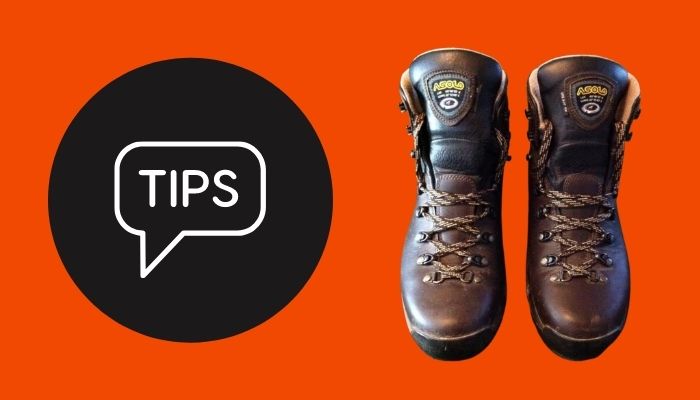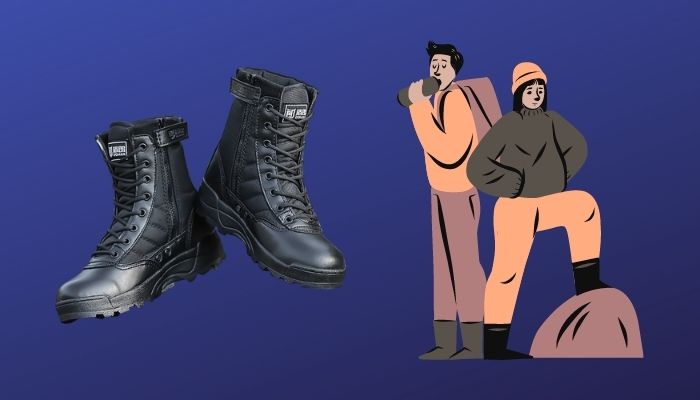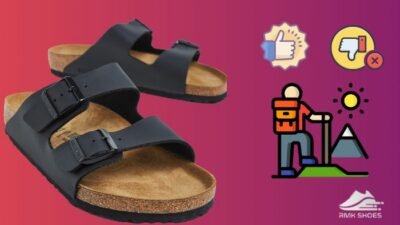Knowing the right time to replace hiking boots can be tricky, especially if you have no idea about the indications the boots convey that they are dying.
But, don’t you worry. Being a hiker myself, I know a thing or two.
I will tell you about the signs by which you can easily determine that your hiking boots need to be replaced.

So let’s hop into the writing to know more about the tips and tricks.
Follow our guide to know Are Tactical Boots Good For Snow
When Do You Need To Replace Your Hiking Boots? | Answered
When your hiking boots no longer provide proper comfort, ankle support, traction, and, most importantly, safety. It is time to replace them. Furthermore, the longevity of hiking boots is determined by how frequently and on what type of terrain you hike.
Wearing a worn-out boot can not only ruin your hiking trip, but it may also create multiple foot problems.
That is why it is important to understand the red flags that indicate the need for a new pair of boots.
Related contents you should read about do I need Hiking Boots for Sedona?
Here are ten indicators that your hiking boots are in need of replacement:
1. Not comfortable enough?
Just when you wear your hiking boots and the first thing you utter is ‘OUCHHH’!
Surely those aren’t your comfortable boots, are they?
Discomfort or pinching your feet is the first sign that says you need to replace your hiking boots as soon as possible.
Because you can only enjoy your hiking trip only when your boots provide you with optimal comfort.
A little pressure on your ankle or toe may appear normal to you, but continuing to wear the same boots may not only harm your feet but will also create hip pain in the long term.
2. Look at the appearance
Your hiking boots’ appearance might reveal a lot about their condition.
A pair of worn-out, filthy, and damaged boots is not only unattractive, but they are also useless on the hiking terrain.
The muck that ruins your hiking boots also slows down the boots’ performance. The filth and muck buildup makes the boots exceedingly rigid and prevents them from breathing.
So, the next time you notice your hiking boots covered in dirt and looking shabby, toss them in your house trash.
Some more guides on why do special forces Wear Hiking Boots?
3. Worn-out shoelaces?
Shoelaces are the cords that connect your feet to your footwear. And it is the shoelaces that are exposed to the pressure of pulling and loosening.
Shoelaces start breaking after being put to so much strain and exposed to muck and water.
Torn shoelaces are also a symptom that your boots are getting old and need to be replaced.
Though you can change the shoelaces with fresh ones, doing so several times means your hiking boots are also getting damaged.
Check out the easiest way to know do Composite Toe Boots Get Cold?
4. Not so comfortable midsole
The midsole is important for keeping your feet comfortable against the severity of the rugged terrain.
After prolonged wear, the midsoles lose their ability to cushion your feet, causing the boots to become extremely uncomfortable and eventually split apart.
If the midsole of your boot no longer provides a padded feel, it’s time to replace it.

5. Tattered tread
The outsole’s tread is what keeps you upright on difficult terrain.
The patterned tread makes smooth contact with the ground, providing excellent traction and stability.
Too much hiking on hilly and rocky roads wears out the tread, preventing them from providing a good grip and, as a result, making your trekking risky.
But before that, go through our epic guide on how much do Army Boots Weigh?
6. Enough ankle support?
Ankle support is essential in hiking boots to protect your feet from strain and injury.
A lack of ankle support affects your footing and puts additional pressure on your feet, which lowers the timing of your hike and causes many health issues such as knee and hip pain.
An easy way to understand that your boot is not supplying enough ankle support is to look at the ankle collar.
The inside rear section of the boots that muffles around the ankle is known as the ankle collar.
If the ankle collar on your hiking boots has cracks and isn’t cushioned, it’s time to replace them.
7. Worn-out insole
Insoles have a big hand in keeping your feet comfortable all day long. Thanks to the EVA foam, which provides incredible cushioning and stability.
But when the insoles get tattered, they lose their cushioning ability, your feet develop blisters, and the boots won’t be comfy anymore.
To examine if your insoles are okay, look if there is any crack or not.
If the insoles are cracked and not in good condition, then it’s time to say bye-bye to your hiking boots.
8. No waterproofness
Hiking in damp conditions necessitates the use of waterproof hiking boots. This keeps your feet fresh and dry.
However, if the waterproof membrane/lining is damaged, the boots no longer keep water out.
Water will leak into the boots, making them extremely damp and noisy.
Once the waterproof liner gets damaged, there is no way around it. You must replace them with new boots.
But, before that, do check our latest post on why are Lucchese Boots so Expensive?
9. Check the upper and stitching
The upper of the boot is responsible for the overall stability of the boot. So look for any cracks or tears on the outside of the boot’s upper.
Also, examine the stitching to see if it has become detached.
Worn-out uppers and stitching are enough to reduce the stability and durability of the boots, which is exactly what you need while trekking.
10. Is the shape deformed?
The shape of your hiking boots can indicate whether or not they need to be changed.
How?
Check to see whether your boots have become flat, uneven, or wide.
If you notice any changes in the shape of your boots, you should replace them since deformed boots raise the chances of injury.
But before that, go through our epic guide on how to Break-In Cowboy Boots
How Often Should You Replace Insoles In Hiking Boots?
The insoles of your hiking boots should be replaced every 4-5 months. This timescale can be altered if you are a frequent hiker who hikes in difficult terrain. Furthermore, if the insole of your hiking boot has worn out and no longer provides appropriate cushioning, it is time to replace it.
Insoles are an essential component of hiking footwear. The majority of insoles are made of EVA foam, which is an excellent choice for next-level comfort.
However, when the insoles become damaged due to excessive use on difficult terrain, they no longer provide your feet with a padded feel.
So, every 3-4 months, closely inspect the insoles to see if they have any cracks or tears.
And if they need to be replaced, go to a shoe store and seek professional assistance in changing the insoles.
Check out our separate post on Clark Desert Boot Sizing
How Long Should Hiking Boots Last?
A good pair of hiking boots will typically last 500-900 miles or 4-6 months, depending on the quality of your boots, how frequently, and on what terrain you hike. However, if your hiking boots are heavy-duty, you can expect to get more mileage out of them.
There is no way to predict how long your hiking boots will last.
Regular hikers who climb on difficult terrain should replace their boots every 3-6 months. However, someone who hikes on easy routes not often will find that their boots last longer.

The durability of the boot is also determined by its quality. A good pair of boots goes hand in hand with good quality and vice versa.
Follow our other guide to know What Are Stockman Boots
How To Take Care For Hiking Boots?
Nothing lasts forever, and hiking boots are no exception. You’ll need to change your boots at some point.
On the other hand, proper care and maintenance extend the life of the boot.
That’s why I’ve included some guidelines below on how to care for your hiking boots.
Here are the ways to take care of your hiking boots:
- After each use, properly clean the boots. Allow no dirt to build in the boots.
- Dry the boots entirely in the air or with a boot-dryer.
- Never use any heat source to dry the boots; this can crack them.
- The insole absorbs most of the moisture. After every hike, make sure to dry them up.
- Spray a good waterproofing spray on your boots to keep water out.
In a hurry? Check out my new post on how to Distress Leather Boots
Hike More, Worry Less
Whether you’re a newbie or a seasoned hiker, understanding when to replace your hiking boots is essential. This will make your hike more enjoyable and keep you from experiencing unwanted pains and aches.
Got all your queries answered through this article? Want more to add-in? Let me know in the comment box.



